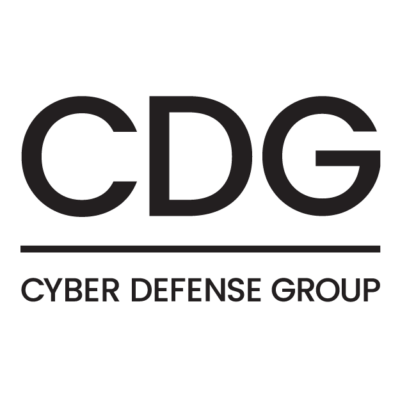5 Ransomware Recovery Steps for Businesses

Ransomware is notably one of the top threats to businesses in today’s digital age. With the rise of online business operations, ransomware and malware attacks have surged. These ransomware attacks involve encrypting or transferring data, with cybercriminals demanding payment for data unlocking or file restoration.commonplace. According to SANS, ransomware attacks have increased by 73% in 2023. This indicates that we simply aren’t taking sufficient measures when it comes to prevention. It’s not if a ransomware attack will happen, its when. Therefore, having a comprehensive ransomware recovery plan is crucial for when businesses face advanced threats.
Types of ransomware attacks

There are several types of ransomware attacks, with the most common being data encryption. One form involves data encryption, where attackers encrypt data for extortion purposes. Another type is double and triple extortion attacks. A double extortion, or exfiltration ransomware attack, occurs when attackers encrypt and steal your data. Going beyond, threat actors carry out triple extortion attacks by encrypting your systems, stealing vital data, and gathering sensitive information on your suppliers and customers for targeted attacks.
Alarming ransomware attack statistics
Ransomware affects almost every industry, with most victims in the government, education, healthcare, services, and technology sectors. The average cost of recovery from a ransomware attack is staggering. According to Sophos’ global survey, “The State of Ransomware 2024,” the average ransomware recovery payment is a whopping $2 million, a 5x increase on the $400k reported in 2023! Only around 47% successfully retrieved their data and services uncorrupted, highlighting that paying may not be the optimal solution. It’s crucial to factor in the cost of ransomware data recovery, which averaged $2.73 million in 2024 alone.
Why ransomware attacks are effective

Let’s delve into the reasons behind the effectiveness of ransomware attacks to gain a deeper insight into the process of ransomware preparedness. Understanding the nuances of ransomware strains and the reasons behind their success empowers us to implement more potent recovery strategies for infected systems, mitigating the risk of future ransomware attacks.
Exploitation of vulnerabilities
The exploitation of vulnerabilities serves as a potent avenue for ransomware attacks, capitalizing on the delayed patching of software and systems by numerous organizations. This neglect leaves them vulnerable to well-known security loopholes. Attackers exploit these weak points to breach networks, propagate ransomware, and encrypt crucial data through:
- Unpatched systems: Attackers can and will exploit known vulnerabilities in software and operating systems that have not been patched or updated. Organizations often procrastinate or disregard these updates, creating entry points for ransomware.
- Zero-day vulnerabilities: These vulnerabilities remain uncharted territory with no patches in sight. Exploiting these weaknesses, attackers breach systems before they can be fortified.
Social engineering tactics
When trust and urgency intersect with limited cybersecurity awareness and training, it creates opportunities for attackers to exploit vulnerabilities successfully. The combination of sophisticated personalization methods and the enormous volume of digital communication sets the stage for a potential disaster waiting to happen. Below are some prevalent social engineering tactics in use today:
- Phishing attacks: involve email-based tactics where cyber attackers send highly targeted emails that mimic legitimate sources, deceiving users into clicking harmful links or downloading infected attachments. Primarily aimed at stealing login credentials, this method is often the first stage in a compromised credentials attack.
- Pretexting and baiting: Social engineering methods that manipulate individuals into divulging confidential information or performing actions that compromise security.
Lack of cybersecurity awareness and training
Lack of cybersecurity awareness and training leaves employees ill-equipped to recognize and respond to threats, making them easy targets for ransomware attacks. Attackers exploit this vulnerability by using social engineering tactics, as mentioned above, to deceive untrained staff into using encrypted files and unknowingly facilitating the attack. Here are a couple reasons why:
- Human error: Employees may inadvertently click on malicious links, download infected files, or use weak passwords. Without regular cybersecurity training, staff remain a significant vulnerability.
- Poor security practices: Neglecting cybersecurity best practices, like implementing multi-factor authentication and regularly updating passwords, increases vulnerability and facilitates unauthorized access by cyber attackers.
Lack of effective cybersecurity infrastructure
Many organizations fail to address and update basic cybersecurity requirements, including employee best practice training and IT infrastructure. Hackers exploit these vulnerabilities knowing that companies often lack the resources or bandwidth to tackle these underlying problems, which typically demand months of strategic planning to resolve. Consequently, these companies opt to pay the ransom to retrieve their data swiftly and resume business operations.
- Lack of regular backups: Organizations without a regular data backup, isolated backups find it difficult to recover data without paying the ransom. Even when a data backup does exist, it may not be comprehensive or recent enough to be useful to restore data.
- Slow recovery processes: Inefficient data recovery processes prolong downtime, increasing the pressure to pay the ransom for a quick resolution.
Lack of proactive incident response planning: Businesses frequently struggle with navigating an attack when it occurs.
Many companies lack a proactive incident response plan to secure their network, deal with threats, and recover valuable data. This leads to reactive responses during attacks, causing more damage and increasing the risk of future ones. Businesses face challenges from budget constraints and a lack of skilled cybersecurity talent, often lacking tools and resources to combat cyber threats effectively. Simply having tools isn’t enough; they need strategic management in a security framework to confront sophisticated threats.
- Lack of an incident response plan: Many organizations lack a detailed and rehearsed incident response plan or ransomware data recovery plan. Then, when a ransomware attack occurs, the absence of a structured response leads to panic and hasty decisions, often exacerbating the situation.
- Delayed response time: Many companies without a well-defined strategy for handling ransomware attacks often experience delays in detecting and responding to such attacks. This delay allows the ransomware to propagate and cause greater harm. Subsequently, under pressure, companies may hastily make ill-advised choices, like opting to pay the ransom to retrieve their vital data.
Complex and evolving threat landscape
The intricate and ever-changing threat landscape enhances the effectiveness of ransomware attacks. Attackers persistently devise sophisticated techniques and tools that can circumvent conventional security measures. This ongoing evolution of threats poses a continual challenge for organizations, rendering them susceptible to:
- Sophisticated attacks: Ransomware tactics are becoming increasingly sophisticated, with attackers using advanced encryption methods and multiple stages of extortion (e.g., double and triple extortion).
- Ransomware-as-a-Service (RaaS): The availability of RaaS allows even less technically skilled attackers to deploy highly effective ransomware attacks, increasing the frequency and reach of such threats.
Disruptions to critical business operations
The substantial operational impact and intense pressure render ransomware attacks highly effective. The swift disruption of crucial systems compels organizations to hastily make decisions, often resulting in ransom payments for prompt restoration of operations. This urgency to resume normal business functions stems from:
- Immediate disruption: Ransomware often targets critical systems and data, causing immediate operational disruptions. The urgency to restore operations can force organizations into making quick decisions, such as paying the ransom.
- Financial and reputational damage: The potential financial loss and reputational damage from prolonged downtime and data breaches create pressure to resolve the situation quickly, often leading to ransom payments without fully assessing alternative recovery options.
Ransomware recovery plan: 5 steps to mitigating the effects

1. Assess the situation of the attack immediately
Don’t act with haste. Take stock of the attack and ask yourself the following questions:
- What exactly was compromised? How far does the ransomware infection go? Was it your entire network system or only a few devices? Was it only a single user account? Or was it only personal files?
- How was your system potentially compromised? Speak with team leads or activate your internal investigation protocol to determine what occurred before the system was compromised. Did someone open a suspicious email or download malicious software ?
- What are the cybercriminals demanding? How much payment are they demanding and what currency do they want?
- Is this a credible threat? Some “ransomware” attacks are not actually ransomware. In such cases, the attacker didn’t actually encrypt your files. They just created a fake ransomware pop-up and locked the screen. Luckily, you can exit the screen using key commands such as Alt-F4 on Windows and Command-W on Mac. You can also try restarting your computer to see if the message goes away. If it goes away, it’s likely not a real ransomware incident.
2. Activate your ransomware recovery plan or hire cybersecurity experts
Once you have assessed the situation, it’s time to activate your ransomware recovery or incident response plan (IRP) or seek external help if you don’t have one. Your IRP should enable you to act quickly and effectively. Here’s what a comprehensive ransomware recovery plant/IRP should cover:
- How to prepare for threats: Establish preventive measures and train staff on recognizing potential threats to secure data.
- How to detect, contain, and eradicate threats: Define the steps for identifying an attack, isolating affected systems, and removing the threat from your environment.
- How to reestablish operations after mitigating and stopping threats: Develop a clear plan for restoring systems and data, ensuring business continuity.
- How to grow your incident response plan after attacks: Review and update your IRP based on lessons learned from the incident.
If you do not have an incident response plan, contact an expert cybersecurity provider immediately. This provider will handle the containment data recovery and eradication of the attack, minimizing further damage.
3. Ensure backups are available and keep them isolated
A critical aspect of ensuring a smooth recovery process is the establishment of comprehensive backups for your valuable data. Alarmingly, 94% of organizations affected by ransomware in the previous year reported cybercriminals’ efforts to breach their backups during the attack. Therefore, safeguarding and isolating these backups is paramount. To further safeguard your backups, keep them stored separately from your current network environment. This precaution helps mitigate the risk of the attack vector spreading to compromise your backup data as well.
By regularly backing up your files, you can maintain the ability to continue your work uninterrupted, even in the event of a ransomware attack. Without proper backups in place, the impact of ransomware on your systems could be devastating, leaving you unable to access crucial data. Paying the ransom demanded by cybercriminals does not guarantee the restoration of all your data.
Here are some key practices for managing backups:
- Regular backups: Regularly perform backups and include all critical data. This reduces the risk of data loss.
- Isolation: To prevent compromise in an attack, isolate your backups from your primary network. Use offline or cloud-based backups with restricted access.
- Regularly test your backups to ensure you can restore them successfully and promptly.
4. Address security breakdowns
The next step is to fix the potential issues that led to the attack. Address these security breakdowns, whether they resulted from human or technical errors. Do this as soon as possible to prevent another attack from happening. Immediately patch any vulnerability or gap you see that needs to be closed.
After containing the attack, focus on addressing the security breakdowns that led to the incident. Here’s how to proceed:
- Identify and patch vulnerabilities: Conduct a thorough security assessment to identify gaps. If these were caused by human error or technical issues, address them immediately. If you see a vulnerability or gap that needs closing, patch it immediately.
- Asset inventory: Make a comprehensive list of all the machines, programs, and valuable data that your organization needs to secure. Focus on one type of asset at a time, such as computers, phones, and tablets, and list out all devices, assets, and information involved.
- Continuous monitoring: Implement security measures that continuously monitor your network environment. Consider hiring experienced emergency response consultants for advice.
Ask yourself these cybersecurity assessment questions to ensure that all gaps are closed:
- How many assets does your organization own? You need to make a list of all the machines, programs, and data that your organization needs to secure. You can start by focusing on one type of asset, such as computers, phones, and tablets, rather than all at once. After choosing an asset type, list all other devices, assets, and information it is associated with.. This will give you a comprehensive view of all the assets you need to assess.
- What are the cybersecurity risks associated with each asset? Examine the security gaps and software vulnerabilities of each asset, considering the likelihood of exploitation and the potential impact on your organization. For example, if your server’s administrative accounts use a simple username and password combination like “admin” and “1234,” you need to start upgrading them as soon as possible. Else, hackers will surely compromise all your admin accounts, which hold crucial documents and software.
- How can I establish and continuously monitor cybersecurity measures? Once you have identified and listed out your organization’s critical assets and vulnerabilities, you need to implement security measures that will monitor your network environment continuously. Consider hiring experienced emergency response consultants for advice.
5. Restore and relaunch data and operations
After addressing all security breakdowns, it’s time to restore your data and relaunch operations. Here’s how to handle this part of ransomware recovery effectively:
- Use automation and hot disaster recovery sites: Speed up the ransomware recovery process using automation and hot disaster recovery sites. Unlike traditional backup methods, hot sites provide cloud-based solutions that are accessible at the push of a button.With a hot site solution, all you have to do is activate a script that copies your IT infrastructure and puts it on another provider. After experiencing a ransomware attack, activate the restore function.The hot site solution will then automatically restore your infrastructure. This can take anywhere from 10 to 15 minutes or a full day if you go through testing.
- Activation and testing: Activate a script that copies your IT infrastructure and deploys it on another provider. Once hit by ransomware, turn on the restore function. The hot site solution will automatically restore your infrastructure, taking anywhere from 10 to 15 minutes to a full day, depending on testing.
- Implement monitoring measures: After restoring your data and operations, your cybersecurity team needs to implement the cybersecurity monitoring measures you drafted in the previous step. This will limit ransomware attacks from happening again.
The power of professional support for ransomware recovery

Ransomware recovery can be difficult, particularly when you have limited resources and time to spend on cybersecurity. That’s where an emergency response team comes in. This team can provide expert guidance to help you with an effective ransomware recovery plan that allows understanding to the extent of the breach, how you can restore your critical data, and how you can move forward.
The benefits of a cybersecurity expert for incident response
- Incident response and containment: A good cybersecurity expert will swiftly implement an incident response plan to contain the attack, isolate affected systems, and prevent the ransomware from spreading further within the network.
- Data recovery and decryption: Experts assist in data recovery from backups and, where possible, decrypting files encrypted by ransomware, minimizing data loss and downtime.
- Root cause analysis: They conduct a thorough investigation to determine how the ransomware attack entered the system, identifying vulnerabilities and entry points to prevent future attacks.
- Infected data recovery, system restoration, and cleanup: Professionals ensure they remove all traces of the ransomware attack by restoring data and systems to a secure state and verifying that no residual threats linger in the network.
- Strengthen cybersecurity posture: After a ransomware attack, robust ransomware recovery is critical. An expert will help bolster an organization’s cybersecurity defenses with a comprehensive cybersecurity program and recovery strategy by updating security policies, implementing advanced threat detection tools, and providing training to staff to reduce the risk of future incidents.
- Help you reduce legal liability and provide certainty for future business operations: A Cybersecurity expert will help document the incident and the ransomware recovery efforts, ensuring compliance with legal and regulatory requirements, and advising on steps to mitigate potential legal and financial repercussions. Regular security assessments, ongoing monitoring, and training ensure that the organization is better protected against future ransomware attacks. This ensures smoother and more secure future operations.
Need help with ransomware recovery?

If you’re looking for more guidance on how to move your cybersecurity program forward, a recovery strategy from an attack, or need help recovering from a ransomware attack, Cyber Defense Group is your trusted partner. Our experts have a deep knowledge of cloud security and incident response, furthermore, a commitment to protect our clients’ security posture while delivering desired business outcomes in an agile environment.
Get in touch, and see what results are possible for your organization.
